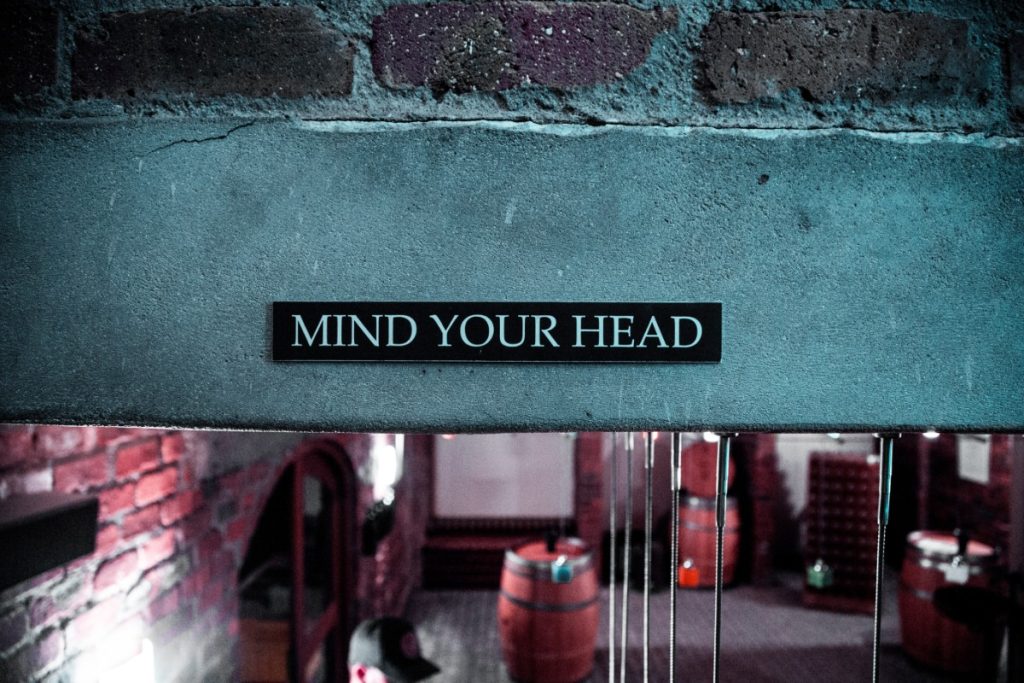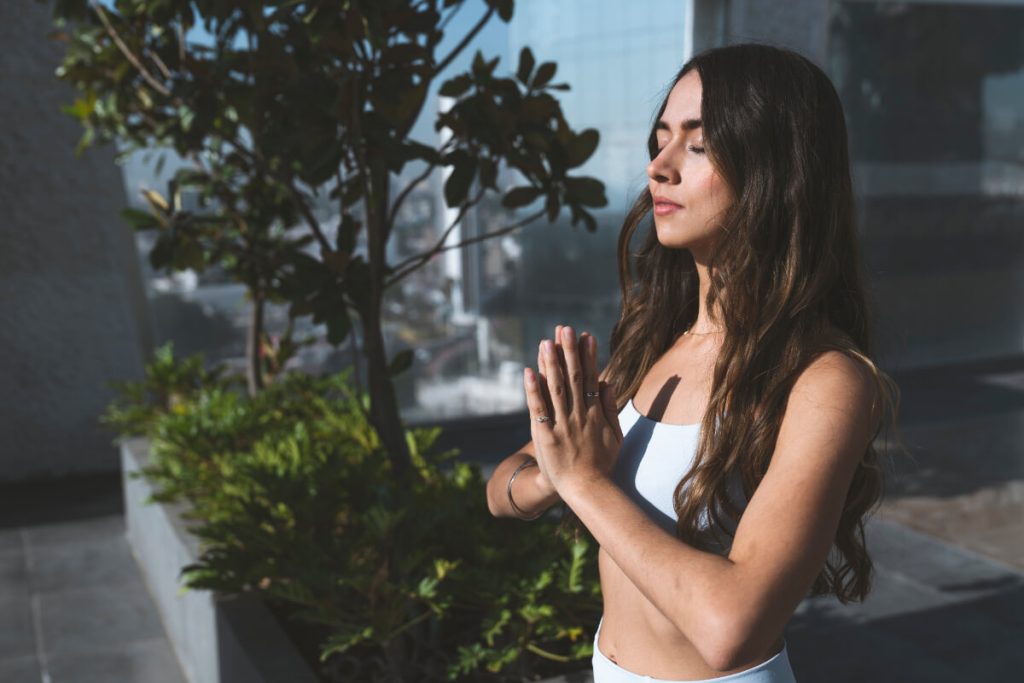Have you ever found yourself lost in your thoughts, completely oblivious to what’s happening around you? If yes, then don’t worry; you’re not alone. Many of us live in a constant state of distraction, with our minds wandering away from the present moment.
But what if there was a way to keep ourselves grounded and connected to the now? That’s where mindfulness comes in.
Table of Contents
What Does It Mean To Live Mindfully?
Living mindfully means fully immersing yourself in the present moment. It’s about engaging with your surroundings, your feelings, and your thoughts without judgment. It’s about being aware but not reactive or overwhelmed by what’s happening around you.
When we live mindfully, we start to see things more clearly. We understand ourselves better and become more empathetic towards others. We begin to appreciate the simple joys of life that we often overlook. In essence, mindfulness allows us to live more fully and more authentically.
And believe it or not, mindfulness is not a complex concept or a skill only a few can master. It’s an innate human quality that we all can access. It’s within us, waiting to be tapped into. All it takes is a little practice and patience.

What Are the Benefits of Being Mindful?
Being mindful enhances emotional regulation and reduces stress. It improves focus, leading to better decision-making and productivity. Mindfulness also fosters self-awareness, promoting deeper connections with oneself and others. Practicing mindfulness often leads to increased gratitude as well.
Many of the benefits of living mindfully have been scientifically validated. The concept of mindfulness was introduced to the West by John Kabat-Zinn, a molecular biologist who was intrigued by the ancient Buddhist practice. His research, along with others, has revealed that mindfulness can enhance our cognitive abilities, improve our well-being, and much more.
Let’s explore some of these benefits in more detail:
- Cognitive enhancement. Mindfulness can boost your cognitive functions in numerous ways. It can improve your attention span, enhance your memory, and increase your mental flexibility. By regularly practicing mindfulness, you’re essentially training your brain to be more efficient and effective.
- Improved well-being. Living mindfully can significantly improve your overall well-being. It can reduce stress, alleviate anxiety, and promote a more positive outlook on life. It allows you to experience joy and happiness in the simplest of moments, leading to a more fulfilling life.
- Better physical health. Believe it or not, mindfulness can even have a positive impact on your physical health. Studies have shown that it can help lower blood pressure, reduce chronic pain, and improve sleep. It can also boost your immune system, making you more resistant to diseases.
- Enhanced emotional intelligence. Mindfulness can help you become more in tune with your emotions and improve your ability to understand, express, and manage your feelings. This increased emotional intelligence can lead to better relationships and more effective communication.
These are just a few of the many benefits of mindfulness. The beauty of this practice is that anyone can reap these benefits. All it requires is a commitment to stay present and a willingness to engage with the world around you in a more mindful manner.
The Difference Between Mindfulness and Meditation
Often, people confuse mindfulness with meditation, and while they are closely related, they are not the same. Understanding the difference between them is crucial for anyone looking to incorporate these practices into their lives.
Mindfulness is a state of being, a way of living. It’s about being fully engaged in the present moment, paying attention to your thoughts, feelings, and surroundings without judgment. It’s a continuous process, a constant awareness that you carry with you throughout your day.
Meditation, on the other hand, is a practice, a tool that helps you cultivate mindfulness. It’s like a training ground where you learn to quiet your mind, focus your attention, and cultivate awareness. While meditation often involves a specific time, place, and technique, mindfulness is something you can practice every moment of the day.
Think of mindfulness as the end goal and meditation as one of the means to get there. By regularly practicing meditation, you can train your mind to be more mindful and to be more present in the everyday moments of your life.
The Types of Mindfulness Practice

There are many ways to cultivate mindfulness, and what works best for you may depend on your lifestyle, preferences, and personal circumstances. Here are a few methods you can explore:
- Seated meditations: This traditional form of meditation involves sitting in a quiet place, focusing on your breath, and observing your thoughts without judgment. It’s a great way to start your mindfulness journey.
- Taking regular pauses: Throughout your day, take short breaks to check in with yourself. Notice your breath, your thoughts, your feelings, and your surroundings. These regular pauses can help you stay connected to the present moment.
- Merging meditation with other activities: You can also practice mindfulness while doing everyday activities like eating, walking, or even washing dishes. The idea is to fully engage with the task at hand, paying attention to each sensation and experience.
- Mindfulness in movement: Activities like yoga, tai chi, or other sports can also be a form of mindfulness practice. As you move your body, you focus your mind, creating a harmony that fosters mindfulness.
There’s no one-size-fits-all approach to mindfulness. It’s about finding what works best for you and making it a part of your daily life. So, explore these methods, be patient with yourself, and embark on your journey towards a more mindful life.
How To Practice Being Mindful
To practice being mindful, focus on the present moment, observing your thoughts, emotions, and sensations without judgment. Engage in regular meditation or deep breathing exercises to cultivate awareness. Integrate mindfulness into daily activities, such as eating, walking, or listening, by fully immersing yourself in the experience.
Focusing on the breath, in particular, is one of the most accessible ways to practice mindfulness. It’s a technique rooted in ancient traditions.
But why the breath, you may ask? The breath serves as a constant, tangible anchor to the present moment. It’s always with us, always available, and it’s something we can turn our attention to at any moment.
So, how do we use our breath to practice mindfulness? Here are some steps to guide you in a simple breathing meditation:
- Find a quiet and comfortable place: Start by finding a quiet place where you won’t be disturbed. Sit comfortably, either on a chair with your feet flat on the ground or cross-legged on a cushion. Keep your back straight but not stiff.
- Focus on your breath: Close your eyes and bring your attention to your breath. Notice the sensation of the air entering your nostrils, filling your lungs, and leaving your body. Try not to control your breath; just observe it.
- Stay with the sensations: As you breathe in and out, stay with the sensations of the breath. You might notice the coolness of the air as you inhale, the warmth as you exhale, or the rise and fall of your chest and abdomen.
- Return to the breath when distracted: It’s natural for your mind to wander. When you notice this happening, gently bring your attention back to your breath without judgment.
- Practice regularly: Consistency is key in mindfulness practice. Try to set aside a few minutes each day for this breathing meditation. With time, you’ll find it easier to stay present and mindful.
Mindfulness Meditation
There are various techniques of mindfulness meditation, each offering a unique approach to the same goal – being fully present. These techniques range from focused attention to reflection, and the best part is that you can find the one that suits your preferences the most.
Here are the eight most common mindfulness meditation techniques. Try them out and see which one resonates with you:
- Focused attention. This technique involves focusing your attention on a specific object, sensation, or thought. It could be your breath, a mantra, or even the sensations in your body. The goal is to keep your attention anchored, and whenever it wanders, gently bring it back.
- Body scan. As the name suggests, this technique involves mentally scanning your body from head to toe. It helps you become more aware of your physical presence and any sensations or discomforts you might be experiencing.
- Noting. In this technique, you take note of any thoughts, feelings, or sensations that arise without getting involved or judging them. You simply acknowledge their presence and let them pass.
- Loving Kindness. This meditation practice involves focusing on developing feelings of compassion and love towards yourself and others. It often involves repeating phrases like “may I be happy, may I be safe, may I be healthy, may I live with ease.”
- Skillful compassion. This technique is similar to Loving Kindness, but it involves focusing on someone you know who is suffering and developing feelings of compassion towards them.
- Visualization. This technique is about visualizing a peaceful place or situation. It’s about creating a positive mental space that helps you stay calm and focused.
- Resting awareness. This meditation technique involves simply resting in the awareness of the present moment. There’s no specific focus, just an open and non-judgmental awareness of whatever arises in your mind.
- Reflection. This technique involves reflecting on a specific question or theme. It’s about gaining deeper insights and understanding through contemplation.
Mindfulness for Anxiety

One of the many benefits of mindfulness is its power to alleviate anxiety, which often stems from worrying about the future or ruminating on the past. However, mindfulness, with its emphasis on the present moment, can help us break free from these debilitating thought patterns.
There are various mindfulness activities and techniques that can help manage and alleviate anxiety:
- Journaling is a powerful mindfulness tool that helps us articulate our thoughts and feelings. It allows us to slow down and reflect on our experiences, providing a safe space to express our worries and fears. Over time, this practice can help reduce anxiety by promoting self-awareness and self-understanding.
- Doodling, or any form of art, can be a form of mindfulness practice. It allows us to channel our energy into creating something, which can be incredibly soothing and calming. It’s not about creating a masterpiece but about focusing on the process and being fully present in the moment.
- Focusing on the breath or body sensations. When anxiety strikes, our breath can become shallow and rapid. By focusing our attention on our breath or body sensations, we can ground ourselves in the present moment. This practice helps us step away from anxious thoughts and brings a sense of calm and relaxation.
- Taking pauses throughout the day. Our lives can be incredibly busy, making it easy to get caught up in the hustle and bustle. Taking short pauses throughout the day to check in with ourselves can be a simple yet effective mindfulness practice. These pauses can help us reconnect with the present moment and reduce feelings of anxiety.
- Taking breaks from social media. With its constant stream of information and comparisons, social media can often fuel anxiety. Taking regular breaks from social media can help reduce feelings of anxiety and create space for more mindful activities.
- Walking in nature is a wonderful way to practice mindfulness. It allows us to connect with our surroundings, appreciate the beauty around us, and take a break from our worries. This connection with nature can have a calming effect and help alleviate anxiety.
Remember, mindfulness is not about eliminating anxiety completely but about learning to relate to it in a healthier way. By incorporating these mindfulness practices into your daily life, you can start to manage your anxiety and live more fully in the present moment.
Conclusion
Mindfulness is a simple yet profound practice. It’s about being present, being aware, and embracing life as it unfolds. It’s about learning to navigate through the ebbs and flows of life with grace and resilience and cultivating a deep sense of connection with ourselves, others, and the world around us.
As we delve deeper into the practice of mindfulness, we begin to realize its transformative power. We start to see the beauty in the ordinary and learn to appreciate the fleeting moments. We also become more attuned to our emotions and thoughts, and we learn to respond rather than react.
But mindfulness is not a destination but a journey. It’s a lifelong practice that requires patience, commitment, and kindness towards oneself. It’s not about achieving a state of perpetual happiness or tranquility but about learning to be present and engaged, no matter what life throws at us.
So, as we conclude, let’s remember that mindfulness is within our reach. It’s a gift that we all possess – all it takes is a little willingness and a lot of practice.





